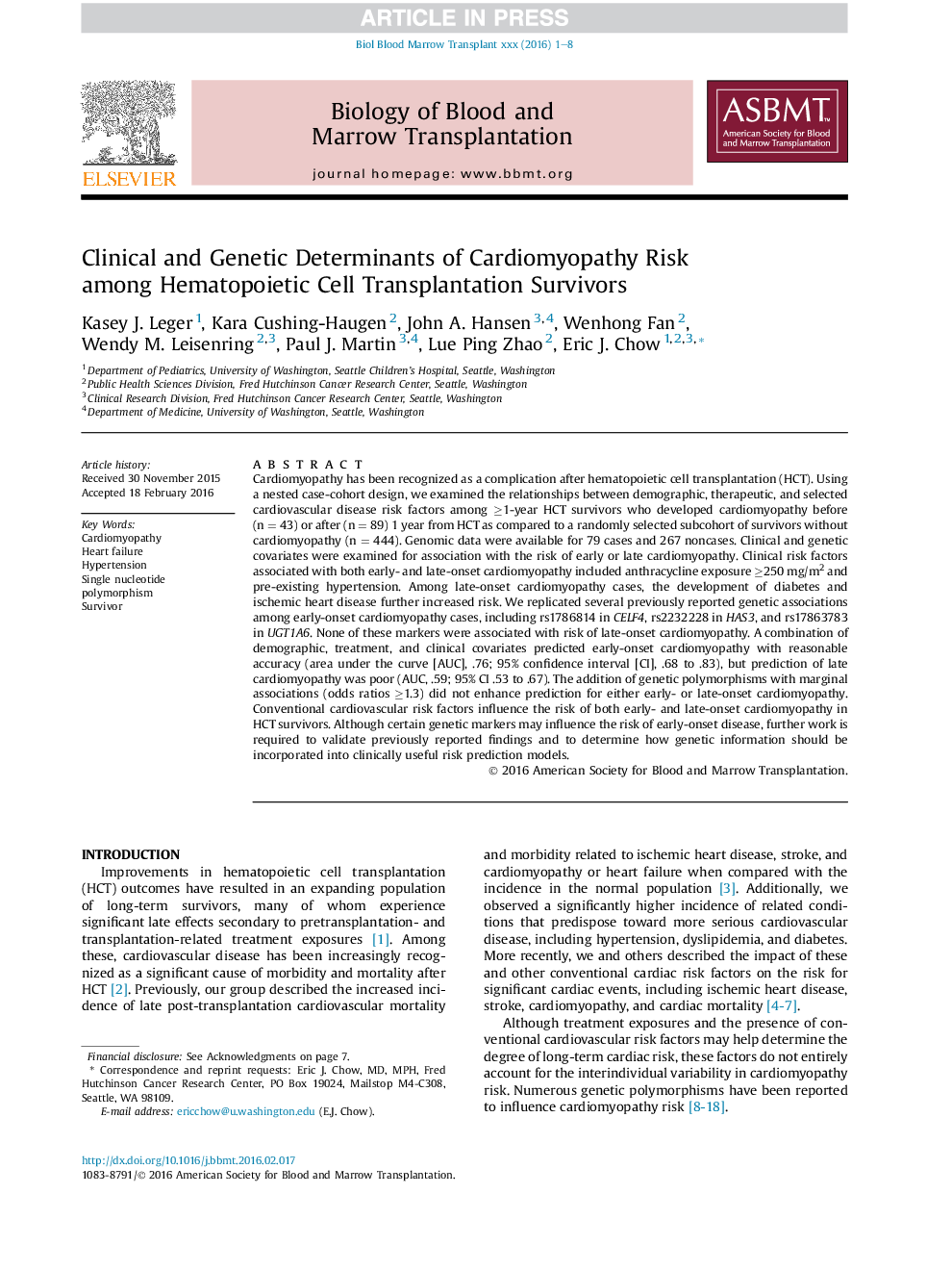| Article ID | Journal | Published Year | Pages | File Type |
|---|---|---|---|---|
| 8431090 | Biology of Blood and Marrow Transplantation | 2016 | 8 Pages |
Abstract
Cardiomyopathy has been recognized as a complication after hematopoietic cell transplantation (HCT). Using a nested case-cohort design, we examined the relationships between demographic, therapeutic, and selected cardiovascular disease risk factors among â¥1-year HCT survivors who developed cardiomyopathy before (n = 43) or after (n = 89) 1 year from HCT as compared to a randomly selected subcohort of survivors without cardiomyopathy (n = 444). Genomic data were available for 79 cases and 267 noncases. Clinical and genetic covariates were examined for association with the risk of early or late cardiomyopathy. Clinical risk factors associated with both early- and late-onset cardiomyopathy included anthracycline exposure â¥250 mg/m2 and pre-existing hypertension. Among late-onset cardiomyopathy cases, the development of diabetes and ischemic heart disease further increased risk. We replicated several previously reported genetic associations among early-onset cardiomyopathy cases, including rs1786814 in CELF4, rs2232228 in HAS3, and rs17863783 in UGT1A6. None of these markers were associated with risk of late-onset cardiomyopathy. A combination of demographic, treatment, and clinical covariates predicted early-onset cardiomyopathy with reasonable accuracy (area under the curve [AUC], .76; 95% confidence interval [CI], .68 to .83), but prediction of late cardiomyopathy was poor (AUC, .59; 95% CI .53 to .67). The addition of genetic polymorphisms with marginal associations (odds ratios â¥1.3) did not enhance prediction for either early- or late-onset cardiomyopathy. Conventional cardiovascular risk factors influence the risk of both early- and late-onset cardiomyopathy in HCT survivors. Although certain genetic markers may influence the risk of early-onset disease, further work is required to validate previously reported findings and to determine how genetic information should be incorporated into clinically useful risk prediction models.
Related Topics
Life Sciences
Biochemistry, Genetics and Molecular Biology
Cancer Research
Authors
Kasey J. Leger, Kara Cushing-Haugen, John A. Hansen, Wenhong Fan, Wendy M. Leisenring, Paul J. Martin, Lue Ping Zhao, Eric J. Chow,
